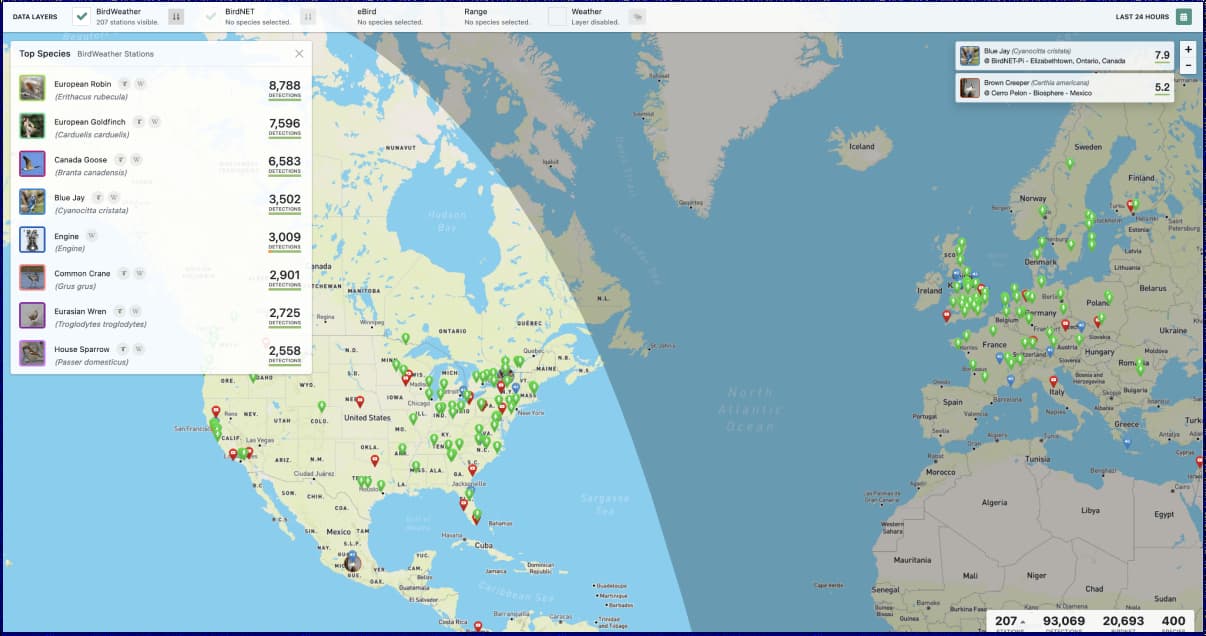Our BirdWeather Mobile App is now available in the App Store for iPhone/iPad! With the BirdWeather app, you’ve got
the full power of the BirdNET AI in your pocket. Featuring:
- Continuously listens for bird sounds with on-board AI processing!
- Post your detections/soundscapes to the BirdWeather site (optional)
- Cached detections/soundscapes when you’re out of coverage
I read this as well, but I have downloaded the BirdWeather app and to be honest it is a pretty simple looking - A 'tap to listen' button and a settings button. The setting button leads to a screen with the following options
- Detections
- Probability %
- Confidence %
- Privacy
- Policy text
- Post to Server
- Listen in Background
- Notifications
- Show Notifications
- Audio Input
- Audio Input Source
- MIC gain
- About
- App version
It is interesting that the top of the settings page states '
Station will be automatically created when first species are detected' which reads as if you will be shown as a station on the web page when a bird is detected whether you like it or not.
The whole app only uses 112.2MB of memory, which is surely too small for the NN to be downloaded to your phone. There are no options to download regional packages, and no options for 'off-line' and 'on-line' working.
I suspect that the 'cached detection', may not necessarily be identified species, but purely clips of sound where a potential bird has been detected. You can do this (perhaps a bit more manually) with the BirdNet app (i.e. save a sound for later upload and analysis).
I also think it would be a bit odd if the BirdNet app needs to hook up to the internet for an ID (which it does), but BirdWeather (using the same analyser) doesn't.
Looking at the three apps, I personally think that Merlin and BirdNet are better. As I say BirdWeather seems simpler, with fewer options - I also found their policy text a little scary (it reads as if they may obtain a lot of info about you). I suppose it all comes down to do you want to share your detections and location online or not.
The question is whether some versions of the client have their own NN. It looks to me like the lite version github redirects here
I am note sure that github includes the actual NN. I suspect that the 'BirdNet Analyser' published on GitHub is really just a package to allow developers to access and harness the NN. The analyser package could easily do this through facilitating a hook up to a server. Again I think the files on github are too small to contain the complete solution. Also if the purpose of placing BirdNet on github was to make it truly open source, I would suspect that they would then have full details of how to programme the NN, so you could train your own analyser from scratch for specific bird acoustics. The guidance notes read to me as if they are just a set of instructions to utilize the analyser in your own application.


 www.birdweather.com
www.birdweather.com





